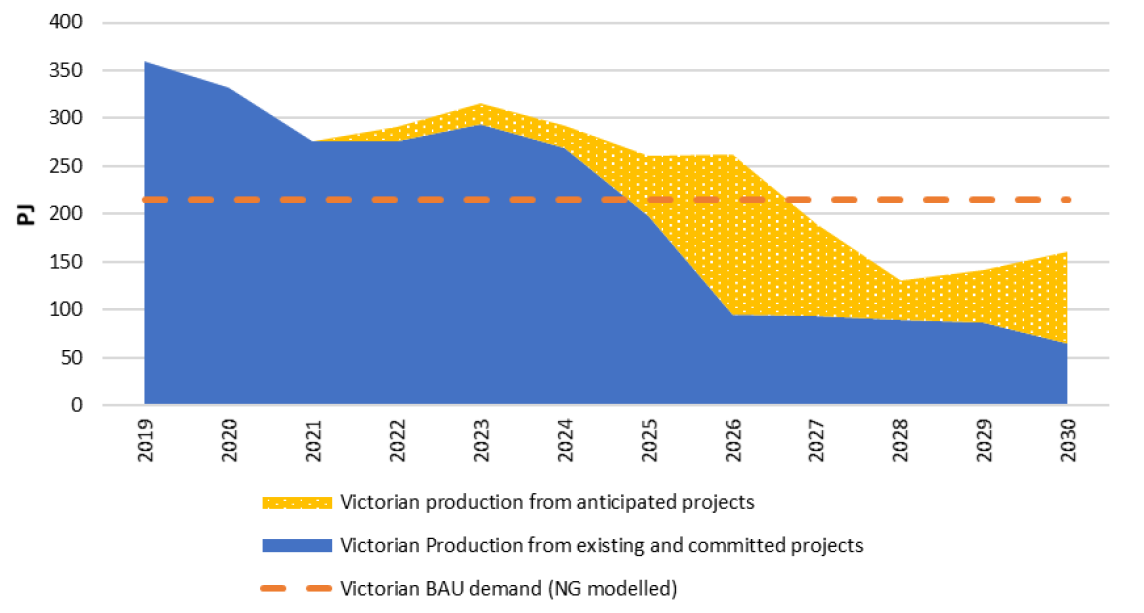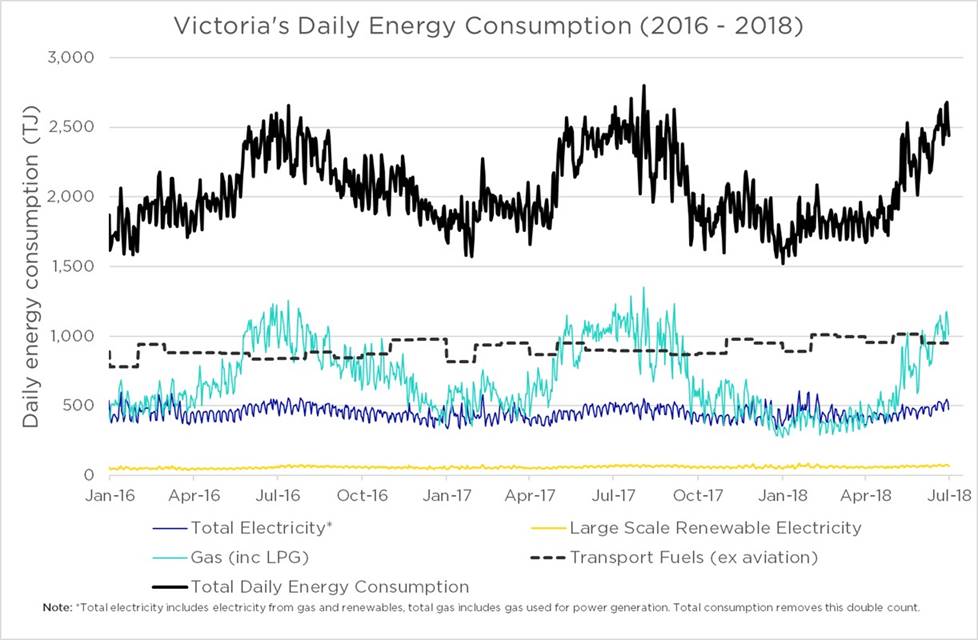Heating electrification: robbing Peter to pay Paul?
Environment Victoria is using a commissioned report by Northmore Gordon on the Victorian gas supply and demand balance to call for policy settings to electrify the gas load.
This assessment is misguided.
Shutting off gas in Victoria would result in higher emissions and higher power bills.
The report simply ignores the whole-of-system impact of these measures on electricity generation and network costs.
It’s like proposing to move commuters from cars to trains but ignoring the impact on the number of trains needed and track capacity constraints.
Shortfalls drive markets
The report[i] indicates that there will be a gas shortfall in Victoria by 2027, based on the Australian Energy Market Operator’s (AEMO) 2019 Gas Statement of Opportunities[ii]. This comes as no surprise to anyone who has been following the AEMO reports over time as they mainly report shortfalls.
These future shortfalls signal to the market that investment is required. This is how markets work to ensure capital is invested when and where required.
The historic shortfalls for 2018 reported back in 2015 were addressed through more gas developments coming online. Similarly, a shortfall for 2027 indicates there are opportunities for new gas supply to enter the market.
The 2020 Gas Statement of Opportunities[iii] highlights several opportunities that can address the shortfall, including new developments to inject more gas into the NSW market, development of NT gas basins and gas import terminals for NSW and Victoria. Further onshore exploration and development in Victoria will also create new local sources of natural gas. These opportunities arise because of projected shortfalls and will create regional investments and jobs.

Figure 1: Reported shortfall of gas in Victoria (Source: Northmore Gordon, pg 3)
Similarly, AEMO also produces reports for the electricity sector[iv]. These reports are used to drive investments in power generation, transmission and distribution assets. For example, one of the reasons for developing the Marinus Link from Tasmania to Victoria is the looming retirement of coal-fired generation and the resulting need for dispatchable electricity[v].
Identifying shortfalls create opportunities to efficiently invest in infrastructure so that the timelines for design, planning, approvals and construction can be taken into account before that additional capacity is required.
Replacing gas with coal?
The report claims that around 100 PJ[vi] of gas could be saved a year by 2030 through electrifying and energy efficiency. Unfortunately, social, economic and environmental impacts have not been considered in this analysis. Nor has the impact on the electricity sector which will need to supply the equivalent of that 100 PJ of gas.
Gas is used to provide seasonal heating, so gas consumption during winter in Victoria is double the gas consumed during summer. Moreover, gas provides the same amount of energy as electricity during those summer months and twice the amount of electricity during the winter months.
While heat pumps are theoretically more efficient[vii], switching to electricity will require costly upgrades to electricity generation, transmission and distribution infrastructure. More so to meet the winter heating demands as heat pumps become less efficient at colder temperatures.

Figure 2: Victoria’s daily energy consumption (Source: Energy Networks Australia analysis)
Victoria’s electricity generation was 47,235 GWh in 2019[viii]. Seventy per cent of this was from coal.
In the first week of winter 2020, coal provided an average of 76 per cent of all generation in Victoria, with a minimum of 56 per cent and a maximum of 97 per cent.
Even with a plan for a 40 per cent renewable energy target by 2025, this still implies that 60 per cent of electricity will be generated from brown coal.
The emission intensity of brown coal is between four to six times higher than using gas directly in the home.
So electrifying gas appliances will result in greater emissions as brown coal is still the predominant generation technology in Victoria.
Hydrogen
The future of energy will be a blend of electricity and sustainable gas.
Australia’s gas networks are multibillion-dollar assets that are capable of storing the equivalent of six billion home batteries.
Energy networks are already trialling blending of renewable hydrogen into gas distribution networks.
Hydrogen, and other sustainable gases, are the future with many homes already being supplied with blended hydrogen gas – for example in Australian Gas Networks’ Hydrogen Park Gladstone project.
Jobs
Many tradespeople make a living from installing appliances.
Apparently: “replacing ducted gas heaters will employ tradies across the state and give a shot to the arm to appliance retailers[ix].”
That seems to be an overly simplistic statement. Appliance retailers generally sell both gas and electric appliances, so a policy setting favouring one appliance over the other will not increase appliance sales but rather their distribution. While some tradies, such as electricians, would be in higher demand with an increased requirement to install electrical appliances, others, especially gas fitters, would be in less demand. It is reasonable to say that any increase in jobs would be offset by job losses in other sectors.
Summary
Adequate planning and policy support are required to ensure a sufficient supply of gas and electricity.
Calls to electrify the gas heating load and avoid investments in gas are misguided as any cost savings from gas exploration and development would be more than offset by investment requirements in the electricity sector.
Electrifying the heating load in Victoria is a particularly poor idea as it would also lead to increased emissions since the grid is still dominated by brown coal and will be for some time.
Hampering the healthy development of a gas sector while encouraging electrification would result in poor social, economic and environmental outcomes for Victorians.
[ii] https://www.aemo.com.au/-/media/Files/Gas/National_Planning_and_Forecasting/GSOO/2019/2019-GSOO-report.pdf
[iii] https://www.aemo.com.au/-/media/files/gas/national_planning_and_forecasting/gsoo/2020/2020-gas-statement-of-opportunities.pdf?la=en#:~:text=In%20the%202020%20Gas%20Statement,Australian%20gas%20markets%20to%202039.
[iv] https://aemo.com.au/energy-systems/electricity/national-electricity-market-nem/nem-forecasting-and-planning/forecasting-and-reliability/nem-electricity-statement-of-opportunities-esoo
[v] https://www.marinuslink.com.au/wp-content/uploads/2020/01/Project-Marinus-Fact-Sheet.pdf
[vi] Table 1 of Northmore Gordon report shows potential savings of 98 to 113PJ
[vii] For more details see: https://www.energynetworks.com.au/news/energy-insider/staying-warm-this-winter-and-keeping-bills-down/
[viii] Australian Energy Statistics, https://www.energy.gov.au/publications/australian-energy-statistics-table-o-electricity-generation-fuel-type-2018-19-and-2019
[ix] https://environmentvictoria.org.au/2020/06/03/a-gas-free-recovery-new-report-shows-how-phasing-out-gas-will-benefit-all-victorians/
